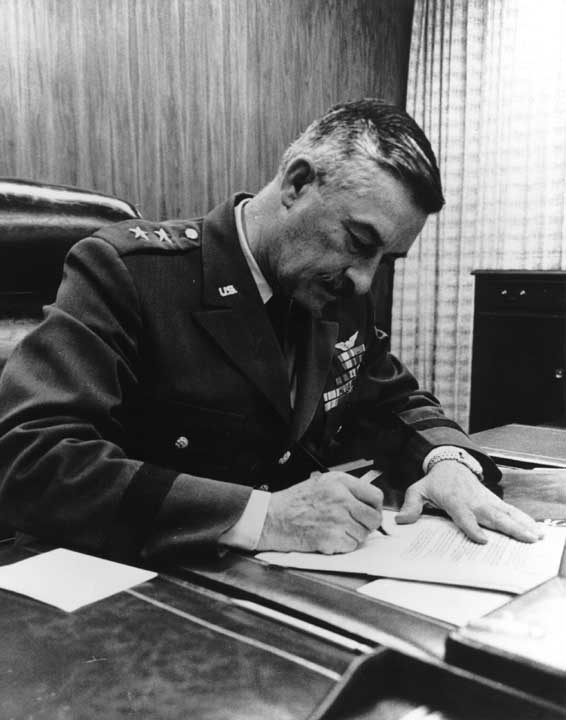AMC History
Since 1962, the U.S. Army Materiel Command has worked tirelessly in support of the U.S. military and its allies around the globe. This proud organization, founded on the idea that the best way to serve and support the warfighter would be by bringing together the fundamental elements of the materiel enterprise under one command, continues to evolve to face the challenges of a changing world. Below you will find a brief history of AMC and the impact it has made on Soldiers from the Vietnam War to the ongoing efforts of Operation Enduring Freedom.
AMC Historical Office

The U.S. Army Materiel Command's Historical Office preserves the history of the command by ensuring that documents, oral interviews, historic videos, visual images and other source materials are safeguarded in the office's historical research collection.
AMC and the AMC Historical Office offer access to a wide range of publications that explore the important history of the organization, its subordinate commands, and their impact on the U.S. Army, the Department of Defense and the United States' global efforts.
A series of AMC historical videos ranging from the early days of the command in the 1960's up through the turn of the century are available on the adjacent menu. These videos provide a history of the Redstone Arsenal, a history of the Army reorganization efforts that lead to the creation of AMC, AMC's specialized capabilities during and after the Vietnam War, and much more.
For more information on the history of the organization, or to access historical source materials, call:
Phone: 256.450.7851
How did we get here?
 This is more than a philosophical question. It's an important component of the history of AMC. The new Command Headquarters' location on Martin Road at Redstone Arsenal actually brings AMC back to an important element of its genesis. For located within the walls of the seemingly dated building (4505) you see on the left, it once headquartered one of the most powerful commands within the United States Army - the U.S. Army Ordnance Missile Command (AOMC).
This is more than a philosophical question. It's an important component of the history of AMC. The new Command Headquarters' location on Martin Road at Redstone Arsenal actually brings AMC back to an important element of its genesis. For located within the walls of the seemingly dated building (4505) you see on the left, it once headquartered one of the most powerful commands within the United States Army - the U.S. Army Ordnance Missile Command (AOMC).

AOMC was commanded by Major General (MG) John B. Medaris. Medaris and his team pioneered this Nation's first steps into space. Between 1958 and 1960, AOMC accounted for almost 25 percent of the entire Army budget for those years. It was Medaris who was one of the pioneers of the concept of project management. In 1961, Army leaders studied what Medaris had accomplished with project management and made it an important component of AMC's future mission.
As we'll explore later, AOMC would become one of the major components of AMC. So, "how did we get here?" It could be said that we've been here all along. But it's been a long road to get back home . . .